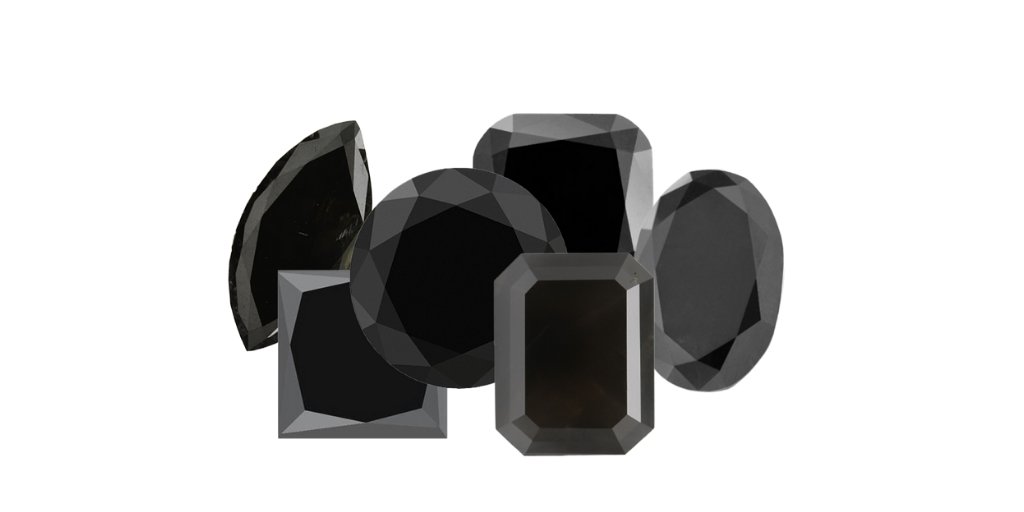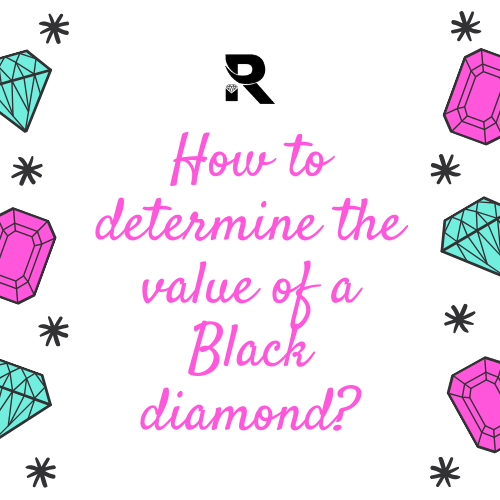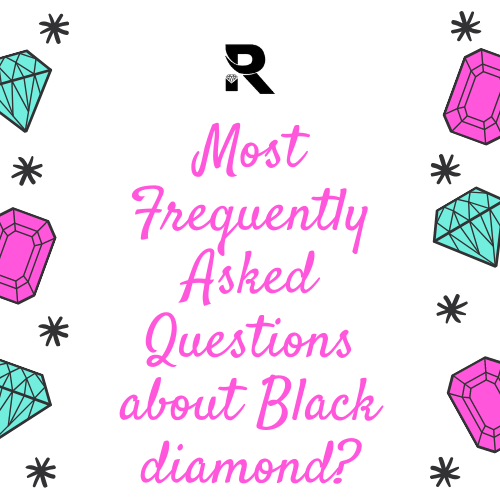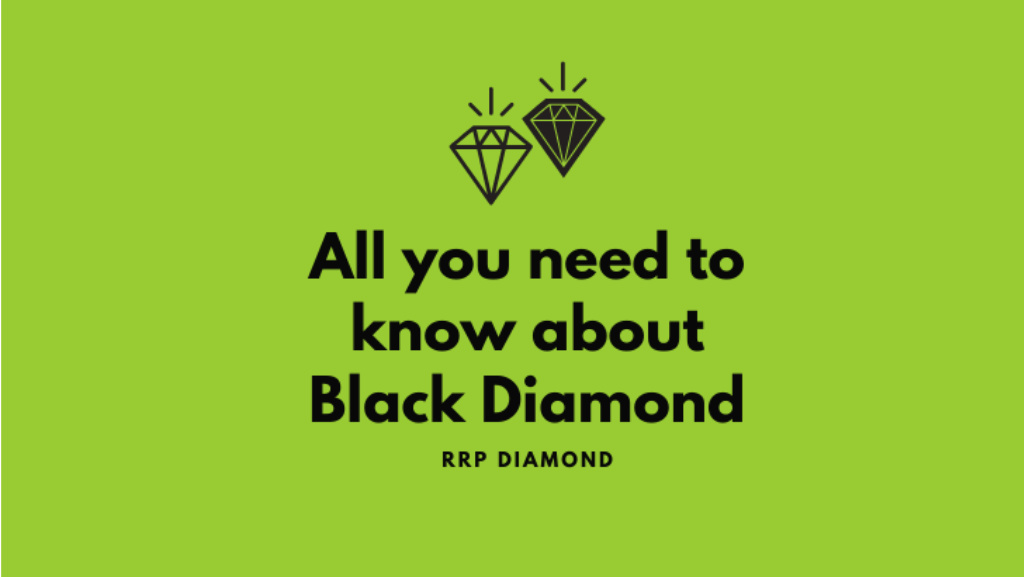
We all remember that iconic scene when Mr. Big finally proposed to Carrie in the second SATC film released in 2010. Presenting her with a black diamond engagement ring, he said, “Because you are not like anyone else.”
We all swooned at that moment. What girl doesn’t want to stand out from the crowd with her jewelry, and the engagement ring is the most important of your jewelry pieces. If you too are thinking of getting a black diamond engagement ring like Sarah Jessica Parker’s iconic character Carrie Bradshaw, you have landed at the right place.
Here is all you need to know about black diamonds, and if it is the right choice for you to use it the centerpiece in your engagement ring:
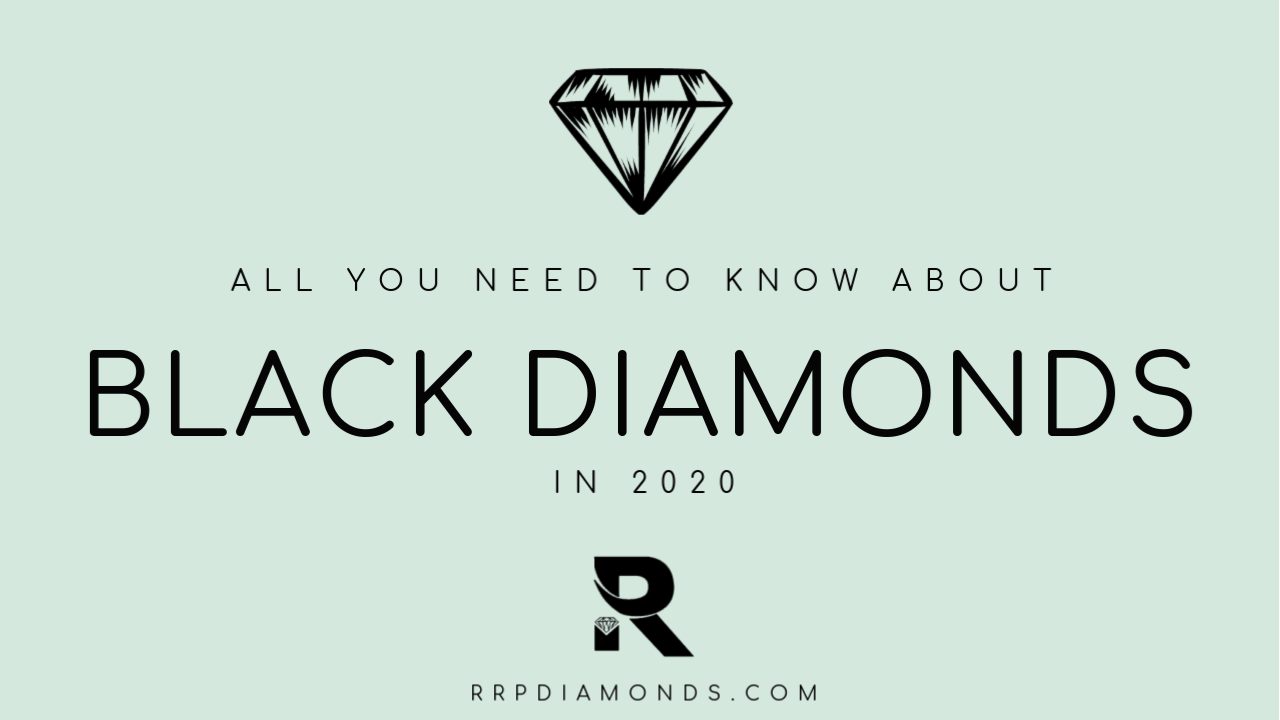
A Tumultuous History of Black Diamond
Black diamonds have gone through quite a tumultuous journey. They were often cast aside in favor of their sparkling counterparts. Indeed, black diamonds were historically considered lowly and cursed, even.
In his 1928 book Diamond: A Descriptive Treatise, JR Sutton wrote that black diamonds are quite similar to black sealing wax, with little to no virtues as gemstones. A black diamond in the early 1800s called the Eye of the Brahman was believed to be cursed.
Until the late 1900s, very few people had any interest in black natural diamonds. However, recently, black diamonds have seen a surge in popularity. Besides the 5-carat black diamond gifted by Mr. Big to Carrie, other artists have also embraced this unique stone.
Carmen Electra, an actress, and Kat von D, a tattoo artist and the founder of a makeup line have since chosen to use back diamonds in their engagement rings. This, in turn, has added to the interest in black diamonds.
Also Read: Top 10 Fantastic Facts About Black Diamonds
What are Black Diamonds?
One of the biggest misconceptions that people have regarding black diamonds is that they are not real. This is simply untrue. Black diamonds are completely naturally occurring, although they can also be created in the lab.
There is also a misconception among people that black natural diamonds are colored diamonds. This is not true. Most colored diamonds like pink and yellow get their color from some minerals they are exposed to during their formation.
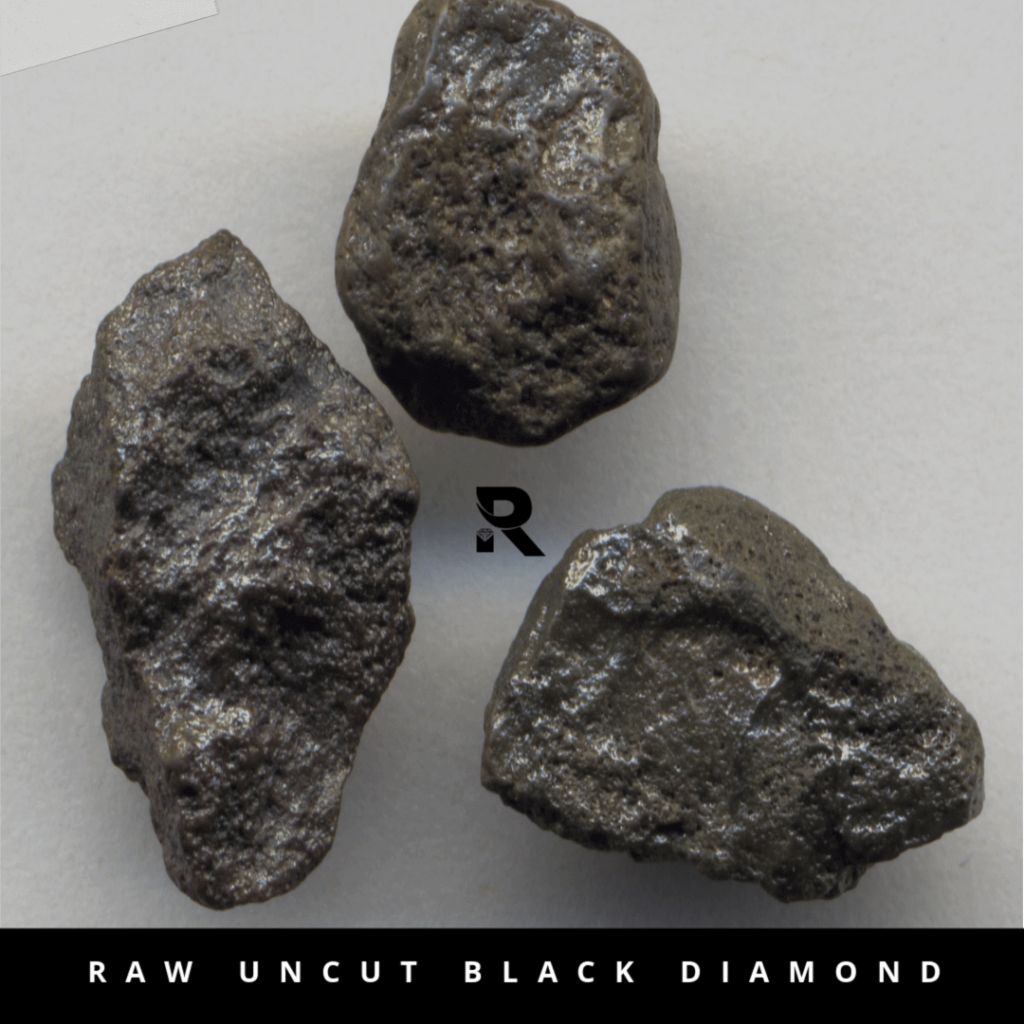
On the other hand, black diamonds are closer to white diamonds in their composition than any colored diamonds. These stones are opaque, because of the high number of inclusions in them. These inclusions are clusters of graphite, usually, and naturally occurring black diamonds with these clusters are called carbonado.
How Does a Black Diamond Get Its Color?
Due to the high amount of graphite and other mineral inclusions like pyrite and hematite, these diamonds do not reflect any light. Often, carbonados also have many fractures and cleavages. Over time, these fractures become stained black due to the deposition of graphite in them.
All these internal features and their actual concentration of them gives the diamond its color. Indeed, depending on the concentration of these features, a black diamond may have a grey color, brown color, or deep green that almost looks green.
Due to these so-called impurities, naturally occurring black diamonds absorb all the light that falls on them. Instead, they absorb all the light that falls on them. This gives them a unique appearance that resembles marble and gives them a metallic luster.
Additionally, due to the high graphite content and various other minerals, these diamonds are very hard to cut. For a traditional diamond cutter, it may take up to a year to completely cut and polish a black color diamond. They also take a lot of time and care for the setting.
Moreover, most black diamonds that are set in jewelry and rings have been treated, in order to achieve that pitch-black color. This is because most black diamonds have a grey color in their unpolished form. They have heavy inclusions and fractures that give them this appearance.
These unpolished stones are subjected to high temperature and low-pressure treatments which result in the deposition of graphite in them. This, in turn, changes their color to black. Some off-color diamonds are also exposed to irradiation that gives them a green color so dark that it black.
So, when you wear that exclusive black diamond ring, you can rest assured that a lot of patience and hard work went into crafting it.
Where Do Black Diamonds Come From?
What we do know is that black diamonds were formed nearly 4 billion years ago. Unlike white diamond stones and other diamonds, black diamonds cannot be found below the surface of the earth.
Instead, they are sourced from the beds of various streams in Brazil and some parts of Central Africa. They are found exclusively in the alluvial deposits formed by the deposits and sediments of a river or running water in these areas.
Since being discovered, only 3 metric tons of black diamonds have been mined, making them very rare. When these diamonds were first discovered by Portuguese settlers, they called them carbonados, because of their burnt appearance.

Because of their short supply, there is a lot of debate about the origin of black diamonds. Some scientists believe that black diamonds are formed due to radiation, while some others believe that they were deposited on the earth’s surface after an asteroid crash.
But the mystery behind their origin only adds to the intrigue and allure of black natural diamonds. Although they were no very popular in the 19th and 20th centuries, they have recently been incorporated into some of the most famous pieces of jewelry.
Famous Black Diamonds and Myths Behind Black Diamonds
Of all the black diamonds in history, perhaps the most famous one is the Black Orlov Diamond. This steel grey colored diamond was 67-carat, but originally, it was part of a 195-carat gem. The diamond was set in an idol in India, and its origins are unknown.
Traditionally, black diamonds were considered cursed in India. This is because of their resemblance to the eyes of snakes and spiders, both of which are considered inauspicious in the country. Due to this belief, the Black Orlov Diamond was cut from its original size to a smaller carat size.
But over time, these superstitions are fading away and people are appreciating and incorporating them into their jewelry.
However, not all countries have negative associations with black diamonds. For instance, in Italy, people believe that if a couple touches a black diamond, any problems in their relationship will be solved, because the black diamond absorbs the negative issues.
The biggest black diamond in the world, known as the Korloff Noir, is thought to have similar properties. Before this 88-carat diamond was polished, it was 421 carats in size. People believe that this diamond bestows happiness and good luck to anyone who touches it.
Are Black Diamonds Low Quality?
Black diamonds are usually cheaper than white diamonds. Because of this, some people believe that they are of low quality.
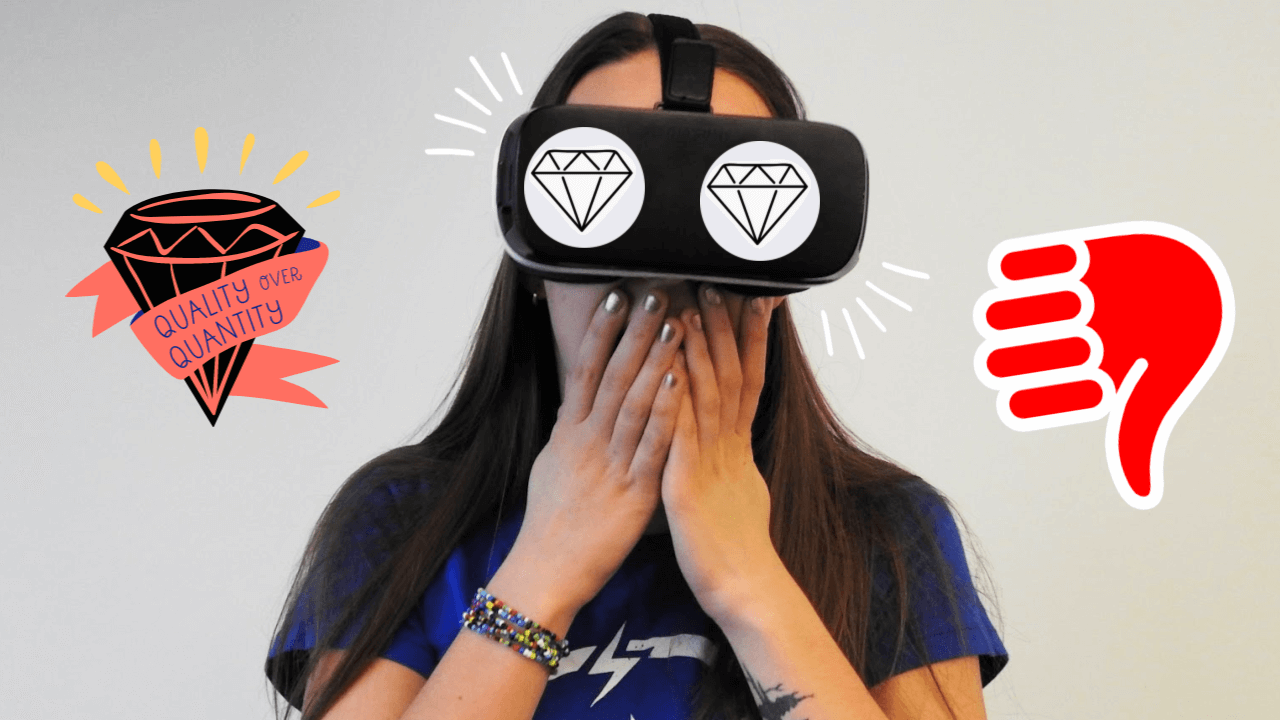
This is not true.
Black diamonds cost less because of their structure and color. They are not low-quality, because even after the treatment process, they remain just as durable. Since they have fractures, cleavages, and many inclusions, they are quite porous and it is difficult to cut and polish them.
However, despite all the nicks and blemishes, a talented and professionally experienced cutter can craft diamonds that are smooth and have a polished surface with no faults. Thus, the bottom line is that black diamonds have a unique structure and a completely different color profile that sets them apart. This does not mean, however, that they are any less than white diamonds or are of low quality.
How are Black Diamonds Graded?
Unlike normal diamonds, black diamonds are not graded on the basis of the 4 Cs. The 4 Cs are used to grade diamonds that are colorless to near-colorless (D to Z graded colored diamonds). This is known as the GIA International Diamond Grading System.
Black diamonds fall in the colored range, so they cannot be graded the same way. Their color is evaluated on the basis of the GIA Grading System for Coloured Diamonds. Additionally, because black diamonds are opaque, they cannot be graded on the clarity scale by GIA.
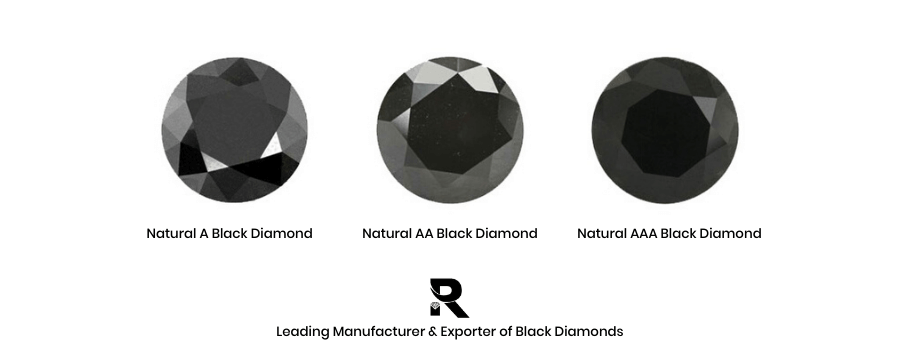
There is also no variation in the color, tone, and saturation of a black diamond, as you would see with pink, blue, or yellow diamonds. Thus, for black diamonds, a single term, Fancy Black is used. Moreover, GIA does not issue any certification for these diamonds.
However, GIA does issue a Coloured Diamond Identification and Origin Report for them. This report will tell you if the black diamond is Fancy Black, and if its color is naturally formed, or treated. Treated diamonds refer to real colorless diamonds that have been given the color black by using irradiation, or heat and temperature.
Treated black diamonds are also known as colorless treated black diamonds or black-colored diamonds. It should be noted that treated black diamonds are different from man-made or lab-grown black diamonds.
The bottom line, it is important to know if your black diamond is naturally black, or if it is treated. Ask your jeweler for a report stating this when you buy a black diamond.
Another thing worth considering is the cut of the diamond. This is because the structure of the diamond will decide how much light enters it. Thus, make sure you pick a design and cut that allows the stone to absorb the maximum amount of light, in order to create a smooth, rich, black appearance. Look for a mirror-like surface to achieve this effect.
When buying a black diamond, you will notice that most stones are graded somewhere near the 1-carat mark. It should be noted that black diamonds are denser than colorless diamonds. Thus, a 1-carat black diamond will always be smaller than a colorless diamond of the same carat value.
What Do Black Diamonds Cost?
Generally speaking, black diamonds cost way less than white diamonds. This is because the demand for black diamonds is less than white diamonds.
The exact cost of a black diamond depends on the type of diamond. Carbonados or naturally occurring black diamonds are more expensive, than, say lab grown black diamonds. In fact, lab-grown diamonds are perhaps the least expensive ones and treated black diamonds fall somewhere in the middle.
However, this is just a general guideline. The price will depend on the size, cut, and your location. Black diamonds below 0.50 carats usually cost around $300-$500.
Black diamonds that are the size between 5 to 6 carats can cost around $700-$800 per carat. For perspective, a white diamond of the same size can cost around $30,000 per carat.
Find below table that shows the price difference between treated black diamonds, natural black diamonds, and white diamonds. All the prices are in carat.
| 0.50 carat | 1.00 carat | 2.00 carat | 3.00 carat | |||||
| Per Carat |
Per Diamond | Per Carat |
Per Diamond | Per Carat |
Per Diamond | Per Carat |
Per Diamond | |
| Treated Black Diamonds | $80 | $40 | $100 | $100 | $110 | $220 | $130 | $390 |
| Natural Black Diamonds | $800 | $400 | $1,200 | $1,200 | $1,500 | $3,000 | $2,000 | $6,000 |
| White Diamonds | $2,500 | $1,250 | $5,000 | $5,000 | $9,500 | $19,000 | $12,000 | $36,000 |
How Do I Care For a Black Diamond?
As it is white diamonds, black diamonds that are naturally occurring, treated black diamonds or black diamonds grown in the lab should never be cleaned using ultrasonic cleaners. These items can affect the color of the diamond.
Additionally, you should also avoid any harsh chemicals or steam around the diamonds. These can also damage the diamond. Carbonados also have hundreds or even thousands of fractures and cleavages that cannot be seen with the naked eye. This makes these diamonds extremely porous. As a result, they are more vulnerable to breakage than white diamonds.
Although diamonds are known for their extreme hardness, carbonados are more susceptible to sharp blows than other kinds of diamonds. Avoid hitting them against furniture, countertops, or walls.
If your black color diamond is a stimulant, you should not wear it when you are swimming or if you are going to be washing dishes. You should avoid exposing these stones to lotions or any kinds of oils. Perhaps the most resilient type of black diamond is the colorless treated one, but they still should not be exposed to ultrasonic cleaners.
Additionally, all types of diamonds, black or white, should be stored in a safe place where they do not get scratched.
For detailed information with pictures please click here.
Should I Get a Black Diamond Engagement Ring?
Sure, why not?
If you are not a traditionalist and want to stand apart from the rest of the world, a black diamond engagement ring is certainly a good idea.
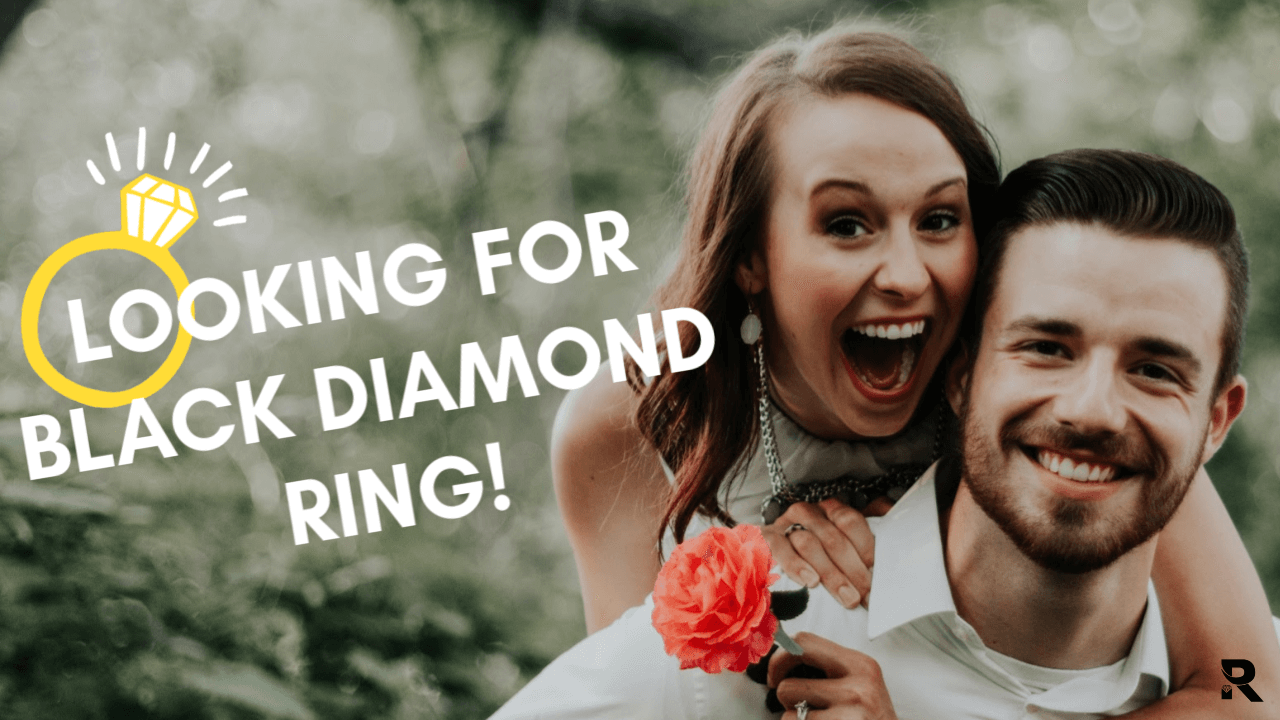
As stated before, people are showing more and more interest in getting black diamond engagement rings lately. You can choose from a wide selection of cuts, including cushion, princess, marquise, heart, oval, pear, emerald, radiant, and the classic round.
The most dramatic way to use a black diamond is to encase it in a white gold or platinum ring with white diamonds. This will bring out the contrast between the two types of diamonds, and the white diamonds will also draw light towards the black diamond.
If you want to get inspired by celebrities, you have to look no further than Carrie Bradshaw’s engagement ring. One of the most popular black diamond rings in the history of television, this piece of jewelry features a 5-carat black diamond, set in 18K white gold, along with a set of 80 pave-set diamonds. The Carrie ring is, indeed, an iconic piece that will have people admiring it for a long time.
You can also get inspiration from Carmen Electra, whose 2008 black diamond engagement ring featured a round black diamond set with the help of six prongs. The gemstone was anchored in a band set with pave diamonds.
Also Read: 15 Most Frequently Asked Questions about Black Diamonds
But these are all examples. You can pick a design of your liking, or even have your ring designed especially for you.
Black diamonds have a personality of their own, and you can infuse your black diamond engagement ring with any or all elements of your liking. These gemstones are unique, one-of-a-kind, and allow you to create customized ring designs that represent your unique relationship.
Although black diamonds do not shine or sparkle like a traditional white diamond, they do have an exotic feel to them. They have a dramatic beauty to them that is simply unparalleled. And maybe you are that kind of a couple – dramatic, enigmatic, and exotic.
At the end of the day, however, as it is with white diamonds, black diamond engagement rings represent your love and commitment towards each other. If you and your future spouse have that, the rest is noise. Get a black diamond ring for your fiancé today, because they offer something more than a traditional ring – they come with added associations of energy, action, and passion. And who doesn’t want that?
FAQs
Are natural black diamonds real diamonds?
Yes, natural black diamonds are real diamonds. They share the same crystalline structure as traditional diamonds but have a unique coloration due to the presence of various mineral inclusions.
What is the rarity of natural black diamonds?
Natural black diamonds are considered relatively rare compared to colorless diamonds. While they are less common, their availability has increased in recent years, and they are becoming more popular in jewelry designs.
Can natural black diamonds be used in engagement rings?
Yes, natural black diamonds are increasingly being used in unique and stylish engagement rings. Their distinctive appearance adds a modern and unconventional touch to traditional jewelry designs.
